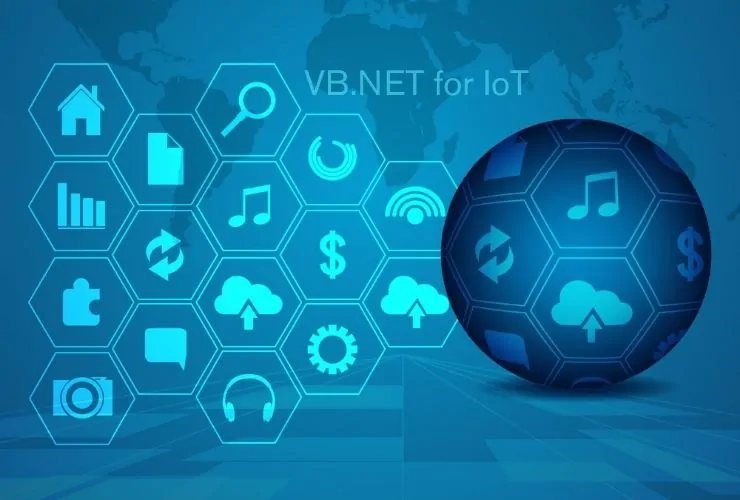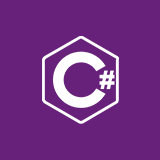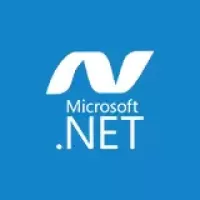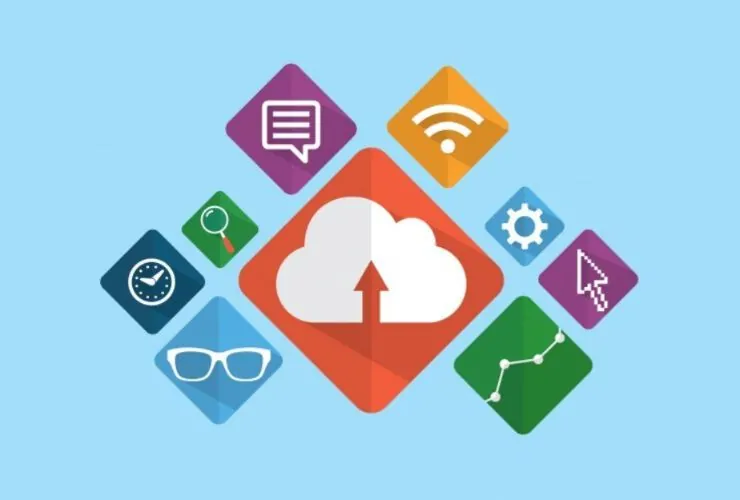The Internet of Things (IoT) is rapidly transforming industries, connecting devices, sensors, and systems in real time. Many developers use Python or C for IoT, but VB.NET is also a powerful and flexible platform. Its deep .NET integration and Windows support make it ideal for building secure, data-rich IoT applications that are easy to maintain.
What are IoT and Embedded Systems
IoT and embedded systems are considered to be connected devices that utilize the Internet or local networks to collect data, exchange information, and perform tasks. Embedded systems directly manage hardware, while an IoT device enables an even broader connectivity to the Cloud and remote management.
VB.NET allows developers to:
- Create two-way communication between hardware sensors and software systems.
- Build enterprise applications that access and manage IoT data via APIs.
- Manage devices and visualizing data through Windows interface automation.
Advantages of Using VB.NET for IoT Solutions
VB.NET has several benefits when utilized in the IoT and embedded systems areas:
1. Great Integration with the .NET Framework
When deploying applications in connected [IoT] or embedded environments, the tools will run on the .NET platform, allowing comprehensive use of libraries and APIs for IoT connectivity, data processing, and UI development tools. Developers can use powerful frameworks like .NET IoT (to facilitate device controlling) or ASP.NET (to develop a dashboard that communicates with the IoT devices in the cloud).
2. Rapid Application Development
With a syntax and language structure perfect for rapid development, VB.NET is well suited for the development of IoT dashboards, device controllers, and IoT-based automation systems with less boilerplate code (meaning: lower level of investment in account for red/watch for redundancies in design) and better readability supporting rapid development.
3. Hardware Interface Capabilities
When you take the .NET IoT library further into an embedded environment, VB.NET is able to communicate from VB.NET directly with hardware components such as sensors, actuators, and microcontrollers enabling reading and writing of any given data across communication protocols such as GPIO, I2C, and SPI.
4. Cross-platform application
With the advent of the .NET 6+ platforms, applications written in VB.NET can now run across a wide variety of supported operating systems including under Windows, Linux, and Raspberry Pi (rc). This opens the door for developers to work across almost any operating system that suits the IoT application planned in any given solution.
5. Cloud and data connectivity –
VB.NET applications can and have the ability to connect virtually out-of-the-box to cloud services such as Azure IoT Hub or AWS IoT Core, or Google Cloud IoT. Device types can be used inside applications easily to connect and upload data to the cloud.
Common IoT Use Cases for VB.NET
Smart Home Automation:
Create systems that enable control over lighting, temperature, and appliances through the use of sensors and IoT hubs.
Access Monitoring:
Connect and monitor machines, collect information from sensors, and notify an operator if a condition exceeds a threshold.
Healthcare Devices:
Build applications for medical monitoring that track patient vitals and transmit the information securely to healthcare professionals.
Fleet/Asset Tracking:
Monitor fleet vehicles in real-time, collecting GPS and sensor information to monitor vehicle location and operation.
Agriculture Automation:
Manage irrigation systems, track soil moisture, and optimize resource use with IoT-enabled devices.
VB.NET and the .NET IoT Framework
The .NET IoT framework supports VB.NET using libraries that provide support for:
- Device communication (GPIO, I2C, SPI)
- Serial port management
- Reading and control of sensors
- Integration with machine learning and AI for predictive analytics.
VB.NET developers can now easily use the libraries to control Raspberry Pi boards, Arduino programmers, and other embedded systems.
VB.NET and Cloud and Edge Computing
When building IoT solutions, you often have to process data both in the cloud and at the edge. With VB.NET, you can use the best of both worlds:
- At the Edge: Use VB.NET applications for collecting and pre-processing data at local devices.
- In the Cloud: Send that data to cloud-based IoT platforms, such as Azure IoT Hub, for more sophisticated analysis, data visualization, and decision making.
This hybrid approach provides for low latency, real-time analytics and scalability.
Best Practices for IoT Development in VB.NET
Optimize Resource Usage:
Reducing resource usage on embedded devices is crucial. Use lightweight libraries and data handling methods whenever possible.
Consider Security:
Security must be thought into every aspect of your device’s data and back-end systems. Think about encryption, authentication, and secure communication protocols.
Use a Modular Architecture:
Separating the hardware interaction layer, data processing layer, and presentation layer will also help you make revisions in the future and to scale.
Automate Testing, Building and Deployment:
Take the time to integrate continuous integration and continuous delivery (CI/CD) pipelines for testing and deploying your VB.NET IoT applications.
Integrate with Cloud Platforms for Analytics:
Once again, think of ways to combine the streams of data from the VB.NET IoT device with cloud-based analytics tools for predictive analytics.
The Future of VB.NET in IoT
VB.NET is traditionally known for Windows applications. However, its integration with modern .NET Core and .NET 8 keeps it relevant for IoT. As IoT frameworks become more language-agnostic, VB.NET developers can build scalable and intelligent systems with long-term stability.
Conclusion
VB.NET remains a powerful and accessible choice for IoT and embedded systems development. Its strong .NET integration, hardware control capabilities, and compatibility with cloud services make it ideal for creating modern connected solutions. As IoT continues to expand, VB.NET’s simplicity, reliability, and performance will continue to empower developers to bridge the gap between hardware and software efficiently.









